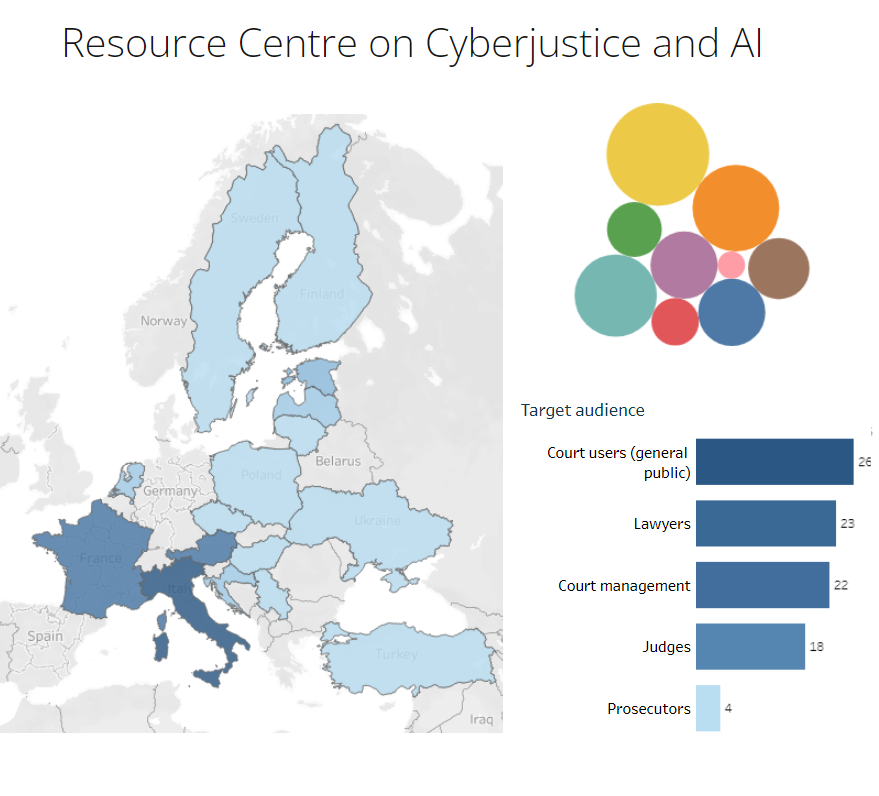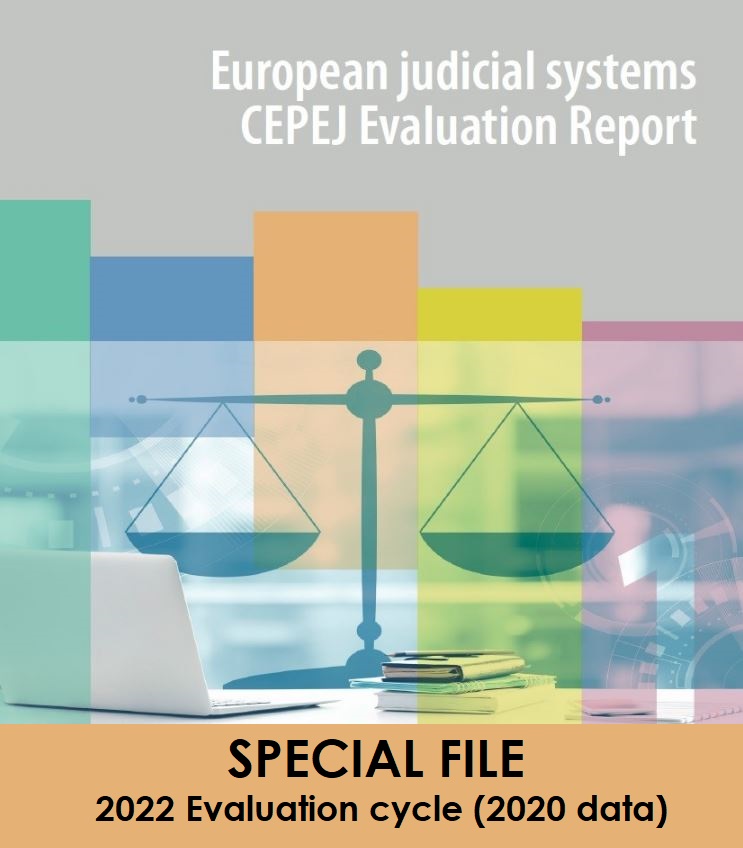Resource Centre on Cyberjustice and AI
The Resource Centre on Cyberjustice and AI serve
The entries are collected through the CEPEJ’s European Cyberjustice Network (ECN) members. The network consists of individuals of nearly all CoE member States and observers, tasked with the digitalisation of national judicial systems. The information is complemented by other publicly available sources. Even though the data collection is systematic an exhaustive overview cannot be guaranteed, due to fragmentation of initiatives down to court level.
The collected information is
Should you want to point us to relevant systems that should be considered for the Resource Centre, you are welcome to do so by submitting this form.
Browse the Resource Centre here
FREQUENTLY ASKED QUESTIONS (FAQ)
What is the purpose of the Resource Centre?
Display functional judicial AI and related cyberjustice systems
The Resource Centre serve
Bring clarity to the discussion on AI
The Centre bring
Factual presentation, no endorsement of specific systems
The entries in the Centre are based on the information given by relevant authorities, or available in the public domain. The Centre does not imply any affiliation, endorsement, or recommendation of the presented systems by the CEPEJ or the Council of Europe in any form whatsoever.
Be as exhaustive as possible for Europe
The Centre
Serve as starting point for further discussion of single applications in line with the
The Centre serve
Help bilateral exchange and learning of authorities
The Centre
Are all systems in the Resource Centre AI?
Wide definition of AI
The
Acknowledging the methodological challenges, and following a user centric perspective, the Centre is focusing on the main area of application of different systems. In combination with further details on the specific function and the applied techniques and approaches it should give the user a clear indication
Explicitly, the Centre also contains electronic systems that cannot be considered AI but are applied in the same area and are key in the digital transformation of the judiciary.
How is the information collected?
ECN correspondents
The entries are collected through the CEPEJ’s European Cyberjustice Network (ECN) members. The network consists of individuals of nearly all CoE member States and observers, tasked with the digitalisation of national judicial systems. The information is complemented by other publicly available sources. Even though the data collection is systematic an exhaustive overview cannot be guaranteed, due to fragmentation of initiatives down to court level.
Classification and review by AIAB
The collected information is
Reliance on source
The Centre relies on the publicly available information on specific systems.
Regular updates
The Centre is updated on a quarterly basis. New entries and missing information are added, and potentially inaccurate information
Possibility to submit additional systems
The CEPEJ welcomes the submission of information on additional systems that should be listed in the Resource Centre via cepej (at) coe.int.
What are the criteria for publication?
Complete, relevant, and verifiable information
What are the main categories and how are they filled in?
- The main categories of the Resource Centre
- Name of the system in English and native language
- Main field of application
-
- Document search, review and Large-scale Discovery
These solutions create a searchable collection of case
-
- Online Dispute Resolution
These solutions cover technologies used for the resolution of disputes between parties with limited human intervention, which can be achieved through hardware and/or software. It concerns mainly Alternative Dispute Resolution, but also dispute resolution in the context of courts.
-
- Prediction of Litigation Outcomes
These solutions learn from large datasets to identify patterns in the data that are consequently used to visualise, simulate or predict new litigation outcomes.
-
- Decision Support
These solutions facilitate or automate stages in the decision-making processes in the justice systems. So far, there have been no reports of fully automated decision-making process without any human supervision. Examples include systems summarising texts, extracting specific information in applications, calculating scales for sentencing and compensation.
-
- Anonymisation and Pseudonymisation
These solutions are used for removing and replacing identifying information such as personal data of court users in judgments.
-
- E-Filing
These technological solutions facilitate access to justice by establishing a digital channel that enables the interaction and exchange of data and e-documents between courts and court users.
-
- Triaging, allocation and workflow automation
These solutions are used to facilitate or complete some tasks and activities during the lifecycle of the proceedings within the Case Management System, minimising the need for human input. Examples are: registration and allocation of court matters, assigning levels of priority to tasks or individuals to determine the most effective order in which to deal with them.
-
- Transcription and translation
These solutions are capable of recognising and analysing speech as well as written text and communicating back. Their main use for courts is in voice/speech recognition and transcription of court procee
-
- Information and assistance services
These solutions provide individuals with information on services available in the justice systems and link individuals to the services and opportunities that are available. Examples are chatbots or other interfaces accessible for the public.
- Secondary field of application (as before)
- Year the system became functional
- Country of application
- Short description including underlying technology
- Link to an official public source/reference of the system
- Indication if the system is implemented by a public or private body, by academia or even mixed
- Main target group/audience of the system (Judges, prosecutors, lawyers, court management, users)
- Status of the system (functional/pilot phase)
Collaborative workspaces:







